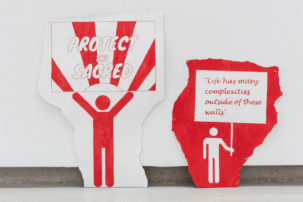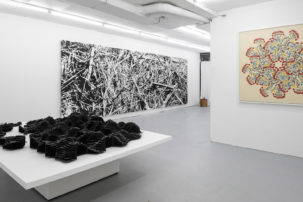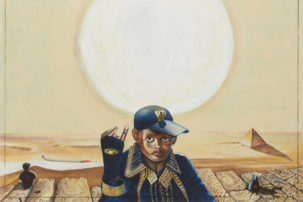Shuvinai Ashoona draws inspiration from blockbuster films and monstrous entities for her drawings of Arctic landscapes. Her exhibition “Mapping Worlds” departs from what may be considered traditional, and pushes the boundaries of Inuit art in a global contemporary art context. She comes from a long lineage of artists (Annie Pootoogook is her cousin) yet she deviates from the style for which her family community has become known. The artist invokes her dynamic imagination to create a series of fantastical scenes, seen, for example, in her unique portrayals of hybrid creatures and women giving birth, as well as recurring depictions of fictional globes.
Among the immense illustrations that make up the exhibition, Sinking Titanic (2012) sits modestly in the back corner of the gallery. The coloured-pencil-and-ink drawing is influenced by James Cameron’s 1997 film adaptation, and reveals Ashoona’s imaginative reflections on pop culture. In the image, the sinking ship sits at an angle while lifeboats float away and screaming patrons plummet into the icy water. It’s a truly horrific image. And yet, inside the sinking “Unsinkable Ship,” the band continues to play, except, in Ashoona’s version—and with her characteristic tongue-in-cheek humour—there’s peculiar imagery: the classical band has been replaced by a rock-and-roll band, complete with electric guitars, amps and drums—rocking out as the capsizing ship meets its fate.
Last year, Ashoona was awarded the Gershon Iskowitz Prize, a celebration of her contributions to Canadian visual arts, and an honour that magnifies the achievement of her large body of work. Ashoona’s voice is undoubtedly expressed throughout this exhibition, providing insight to an otherworldly and mystical imagination. In order for artists to have agency over their practice, it’s integral that their vision and outlook be considered in the representation of their work, especially if these artworks will be distributed internationally. This approach demonstrates co-authorship, collaboration and community. Prior to the exhibition, Ashoona hadn’t seen her illustrations in years, and she said that to see them now was like seeing old friends again. When artists—especially Inuit—are removed from the distribution process of their artworks, it reveals the flaws of the art market within the Circumpolar North. Exhibitions such as these—where artworks that usually reside in international collections are re-displayed alongside each other—permit Inuit artists to encounter their own works again.
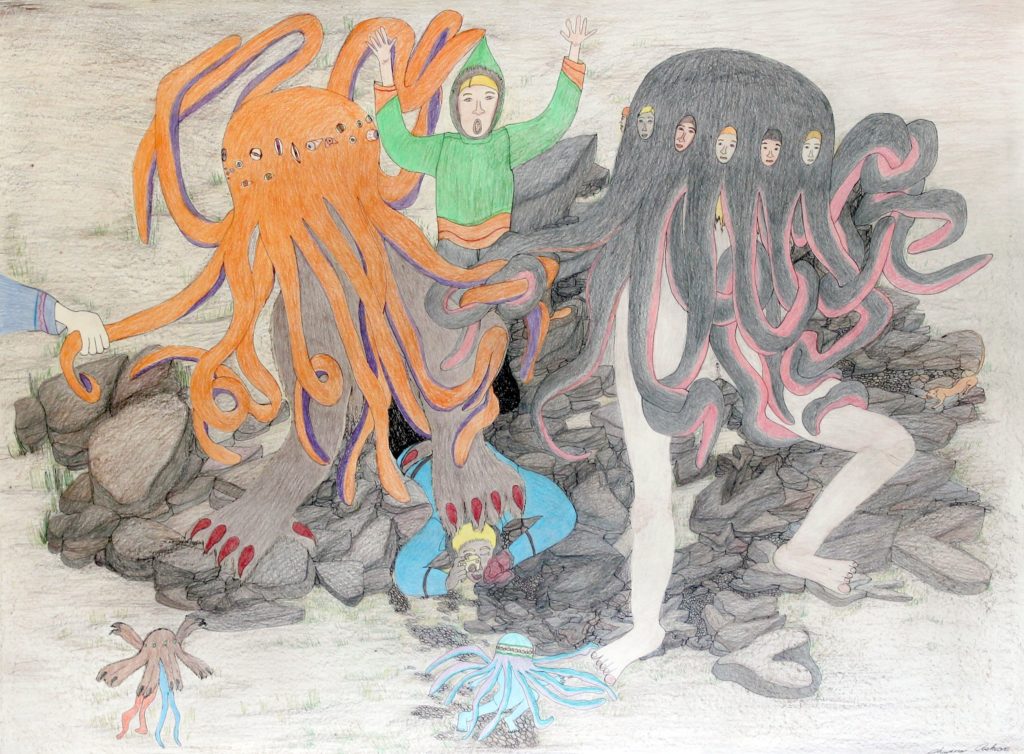
Shuvinai Ashoona, Composition (Attack of the Tentacle Monsters), 2015. Courtesy of the artist. Photo: Feheley Fine Arts.

Shuvinai Ashoona, Composition (Hunting Monsters), 2015. Photo: Brad van der Zanden, Feheley Fine Arts.

Shuvinai Ashoona, Creatures, 2015. Photo: Feheley Fine Arts.

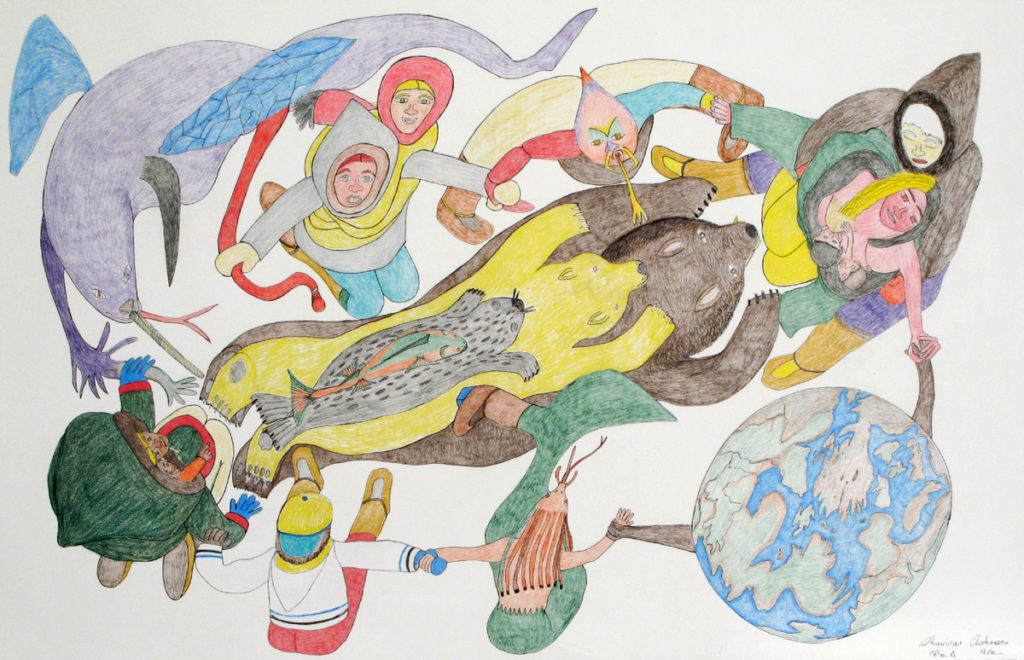 Shuvinai Ashoona, Composition (People, Animals, and the World Holding Hands, 2008. Photo: Brad van der Zanden, Feheley Fine Arts.
Shuvinai Ashoona, Composition (People, Animals, and the World Holding Hands, 2008. Photo: Brad van der Zanden, Feheley Fine Arts.

